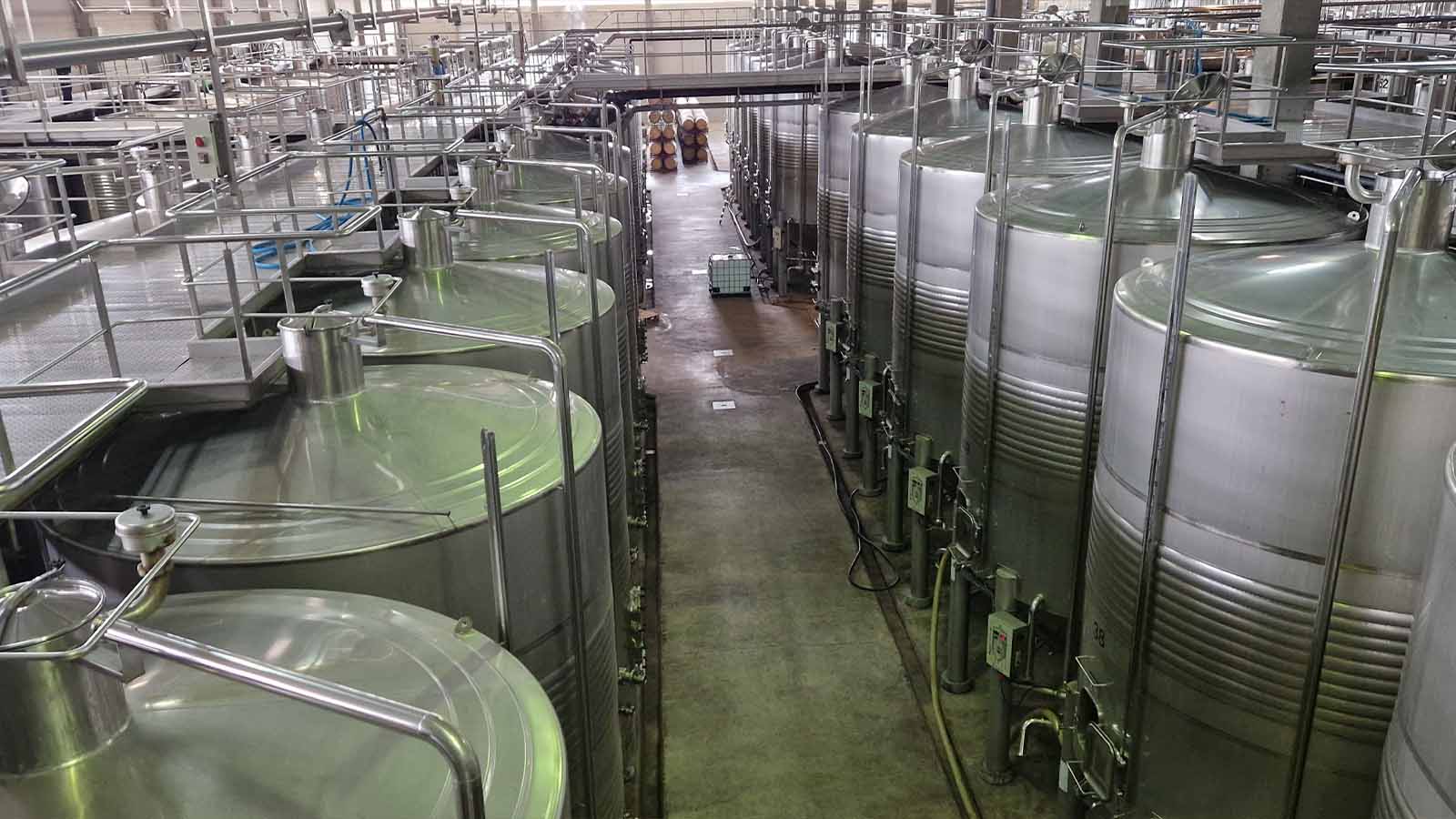The first tool to be found in most wineries, is the crusher, an invention of the late 19th century. It is sometimes called a crusher-destemmer, crushing or splitting the berries to liberate the juice and then removing the berries from the stem of the bunch. Most crushers, pass the bunches of grapes through a series of rollers first (to crush the berries) and then to separate the stalks with beaters revolving within a slotted cage. The already-crushed berries, drop through the slots and the stalks are then rejected through the open end of the cage. Some crushers destem first while most modern versions have adjustable rollers which permit the winemaker to select anything from virtually whole berries to fully crushed grapes.
Sparkling-wine makers in many parts of the world bypass the crusher altogether, placing the whole bunches directly into the press. The pressing process is much slower as a result, but the juice yielded is clearer and finer. Makers of certain red wines using the carbonic maceration technique, may also wholly or partially bypass the crusher.
Cooling of the must can make a crucial difference to the quality of the wine and some makers of white wine pass the must through a device called a ‘heat-exchanger’ before being sent to the press. This instantaneously reduces the temperature of the must. The next device used is the press. Depending on which wine is being produced (red/white) will determine if and when the press is used. There are different types of presses used, the traditional basket press, pneumatic or airbag press, the tank press and large winery, continuous press.

Fermentation vessels have also evolved over the years and the introduction of the stainless steel vessel has revolutionized the way in which fermentation takes place, especially in white wines. The traditional vessels are made of oak and are not intended to impart any wood flavour to the wine. In such open vats, the red grape skins can easily be ‘punched’ back into the juice on which they float, either barefoot or by a disc on the end of a pole. This method of fermentation is only used for red (and fortified) wines and whilst labour intensive, it is still strongly favoured by some excellent winemakers.

Modern vats are made from slate, cement, enamel, glass or ceramic-lined vessels of rectangular or square shapes. Stainless steel is now replacing all of these, worldwide. The reason is that they provide greater hygiene, facilitates in-place temperature control of fermentation and allow for all sorts of automated or mechanized agitation methods. Systems are many and varied with the least automatic being the draining off of juice from the bottom valve of the vat and pumping it back over the top of the cap.
After fermentation there are a number of machines designed to clarify grape juice or wine under the term filtration. Present day winemaking is explained in more detail per grape variety on our different pages. At every stage of the process, different options are available to the winemaker, which in turn determine the final quality and style of the wine finally bottled.
Throughout the centuries of winemaking a greater understanding, techniques and new technologies have helped the winemaker to affect the character and style of the wine produced. With scientific knowledge, the measure of control over virtually all the winemaking procedures has been ensured and allows new techniques to be developed as well as eliminating the potential for spoilage of the wine or growth of the grapes through rot, mould or lack of flavour.










